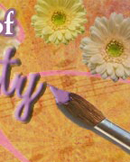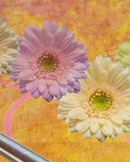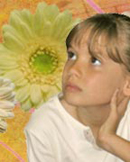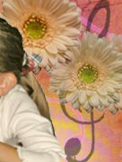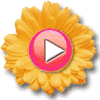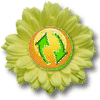 Inspiration demands the active cooperation of the intellect joined with enthusiasm, and it is under such conditions that marvelous conceptions, with all that is excellent and divine, come into being. Georgio Vasari (1511-1574)
Inspiration demands the active cooperation of the intellect joined with enthusiasm, and it is under such conditions that marvelous conceptions, with all that is excellent and divine, come into being. Georgio Vasari (1511-1574)
Sometimes creativity in a person is not easy to recognize. This week's interactive exercise illustrates this point. Click on the daisy to begin.
Welcome to Week 7. This week we will look at the role of assessment and evaluation in measuring creativity in individuals, and the role of self-assessment in a classroom setting. With regards to assessment of class work, it is important to be cognizant of the fact that creative opportunities are present in all phases of the creative process including evaluation. Gifted students continue to thrive when assessment is authentic, when they have taken part in its design, and when they are one of the evaluators. With regards to identifying creative potential of school age children, it is important to realize that although there are many ways to identify creative personality traits, abilities, and talents, there is no way to predict, with a high level of accuracy, which individual will use their creativity to reach their greatest potential.
We will continue to focus on ways to teach in a creative environment by discussing how both processes and products can be evaluated. We will also learn about the role of assessment in determining creativity, and instruments that identify creativity.



